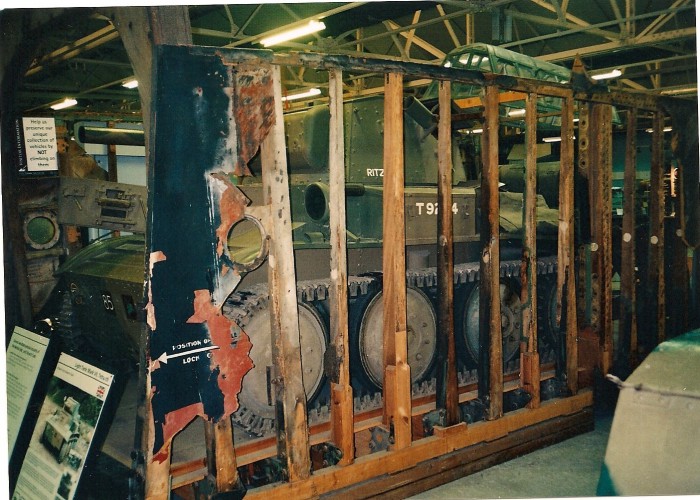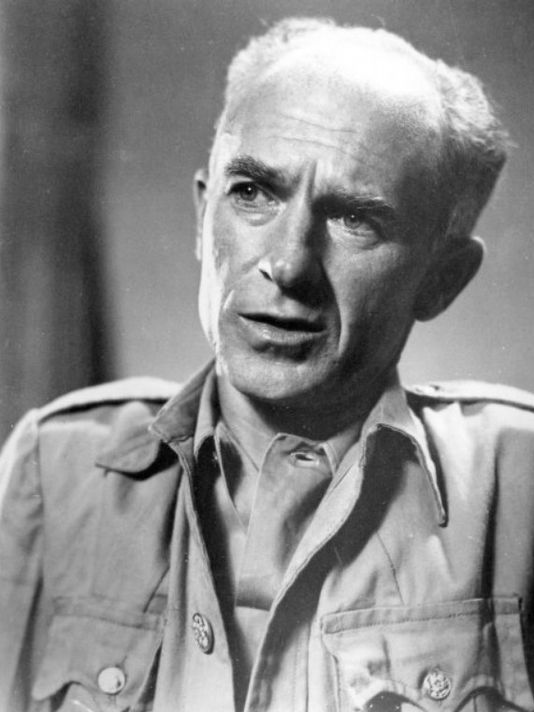D Day Landings. Tetrarch Light Tanks
On D Day and before, twenty Tetrarch Light Tanks were deployed by the 6th Airborne Recce Regt in Normandy. They were not very successful; several were destroyed in the transportation and landing. Those that survived were outclassed by German armour. They were mostly used for close support particularly by 8 Para in the Bois de Bavent.
From Wikipedia:
On 13 December 1943, the War Office decided to expand the Light Tank Squadron into a regiment equipped with a combination of light tanks and conventional reconnaissance vehicles such as scout cars, and on 1 April 1944, it was re-designated as the 6th Airborne Armoured Reconnaissance Regiment. The regiment consisted of a Headquarters Squadron, a Light Tank Squadron and a Reconnaissance Squadron; two Tetrarchs, the Mark 1 CS variation, were attached to the Headquarters Squadron, but the Light Tank Squadron, also known as ‘A’ Squadron, received the majority of the Tetrarchs. ‘A’ Squadron had nineteen Tetrarchs split between six troops, mostly were armed with 2 pounders fitted with Littlejohn adaptors. On 24 May 1944, ‘A’ Squadron moved from their training area to a transit camp at Tarrant Rushton airfield, while the rest of the regiment moved to RAF Brize Norton airfield. The next day the regiment was transported to participate in the British airborne landings in Normandy.[45] The operation began on the night of 5 June, with the deployment of 6th Airborne Division. It was tasked with protecting the eastern flank of the Allied seaborne landings, securing strategically important areas east of Caen, capturing several important bridges over the Caen Canal and River Dives, and destroying a coastal artillery battery. Insufficient transport aircraft were available to land all three of the division’s brigades simultaneously; one would have to be landed in a second lift later in the day. Maj. Gen. Gale had initially intended for the 6th Airlanding Brigade, to which the 6th Airborne Armoured Reconnaissance Regiment was attached, to be landed first; however, aerial photography revealed that anti-glider poles had been erected in the landing zone selected for the brigade. Therefore, Gale decided that the 3rd Parachute Brigade and 5th Parachute Brigade (which did not utilise gliders) should land in the first lift to clear the landing zones, allowing the 6th Airlanding Brigade to land in the second lift.
Hamilcar gliders of 6th Airlanding Brigade arrive on Drop Zone ‘N’ carrying Tetrarch tanks, D Day, 6 June 1944.
The Horsa and Hamilcar gliders of the brigade landed at 21:00 on 6 June in a landing zone cleared of obstructions by the 5th Parachute Brigade. The brigade’s primary tasks were to bring in reinforcements and supplies, and to help the two parachute brigades consolidate the area held by the division. The Tetrarchs of ‘A’ Squadron were to play an integral part in this reconnaissance role, but the squadron’s strength of twenty tanks was severely depleted by the time it landed in Normandy. It lost one tank before the formation landed when the Tetrarch broke loose of its shackles and crashed through the nose of the glider that was carrying it, causing both to fall into the sea mid-flight. The squadron’s strength was further weakened when two gliders collided with each other in the landing zone, destroying themselves and the Tetrarchs they carried; a third Hamilcar hit another Tetrarch as it was being unloaded and flipped the tank upside down, rendering it unusable, although the crew escaped without injury.[51][52] The surviving tanks were then rendered temporarily immobile when parachute rigging lines became tangled in their suspensions, forcing their crews to cut the lines away with welding torches.
The squadron advanced to the south of the landing zone to link up with the rest of the regiment to support the 8th Parachute Battalion in the Bois de Bavent. The squadron engaged German infantry and armour they encountered. By the day after D Day, two Tetrarchs had been lost to enemy action, one destroyed by a German self-propelled gun and the second by hitting a mine. The division was reinforced by British troops who were advancing from the invasion beaches and it began to push through Normandy, while the squadron continued its reconnaissance duties. At this time, Maj. Gen. Gale decided to avoid, if possible, engaging the Tetrarchs with German armour, as they proved to be completely outclassed by the German tanks and self-propelled guns, such as the Panzer IV and the Sturmgeschütz III. Instead, when the division required armoured support it summoned it from armoured units outside the division and the Tetrarchs were used to support infantry patrols and provide fire support. By August, in the division’s preparation for the planned breakout from the Normandy bridgehead, the majority of Tetrarchs in ‘A’ Squadron were replaced with Cromwell fast cruiser tanks; only three Tetrarchs remained, assigned to the Headquarters troop of ‘A’ Squadron.










Leave A Comment